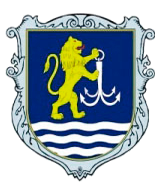STUDY OF TOWING RESISTANCE OF CRUISE SHIPS DURING THEIR DIMENSIONAL MODERNIZATION
Abstract
The growing demand for sea cruises forces shipping companies to start production of new ships. In addition, the growing requirements of the International Maritime Organization to ensure the safety of navigation and environmental protection force shipyards and manufacturers of ship equipment to involve the most modern developments in marine engineering and conduct relevant research and design companies. At the same time, there are several dozen ships in operation in the world passenger fleet, which must be brought up to modern requirements, that is, reduce the level of wear and tear and meet the requirements of the cruise market. The world cruise fleet has a significant number of such ships - candidates for dimensional modernization. The increase in the size of the ship due to the addition of a cylindrical insert will affect not only the ship’s hull, but also the operation of the propeller-steering system and the main engine, since it is an integral part of the entire ship’s power system. The interaction of the structural elements of the propulsive complex has a systemic nature and should be studied using a systemic approach. Such structural elements are the propeller-rudder complex, the hull, the main electric motor (ship electrical power system). An analysis of the effect of increasing the length of the ship on the characteristics of the system that forms the propulsive complex – “propellerhull – main engine – gun” was carried out. The assessment of the maneuverability and propulsive qualities of the vessel is based on the determination of its buckling resistance. The towing resistance as a function of the speed and length of the vessel (the length of the cylindrical insert) was studied using the Holtrop method. A qualitative and quantitative assessment of the towing-propulsion resistance and its components during dimensional modernization was carried out.
Downloads
References
2. Det Norske Veritas Holding AS (“DNV Holding”). Electronic resource. Access mode: www.dnv.com. Alexandros Chiotopoulos, Gerd-Michael Wuersig, Atle Ellefsen. Retrofitting cruise ships to LNG by elongation. LNG AS SHIP FUEL THE FUTURE – TODAY № 01. 2014.
3. Шумило O.М. Оптимізація розмірної модернізації пасажирських суден з урахуванням енергоефективності. Розвиток транспорту. 2023. № 4 (15). С. 58–77. DOI: 10.33082/td.2022.4-15.06.
4. Розрахунок ходовості надводних водотонажних суден : навчальний посібник / М.Б. Сліжевський та ін. Миколаїв : НУК, 2004. 192 с.
5. Simulation strategy of the full-scale ship resistance and propulsion performance / K. Song et al. Eng. Appl. Comp. Fluid Mech. 2021. № 15. P. 1321–1342.
6. Assessment of hydrodynamic characteristics of a full-scale ship at different draughts / A. Farkas et al. Ocean Eng. 2018. № 156. P. 135–152.
7. Scale effect on ship resistance components and form factor / A. Dogrul et al. Ocean Eng. 2020. № 209. P. 107428.
8. Numerical analysis of the effects of stern flaps on ship resistance and propulsion performance / K.W. Song et al. Ocean Eng. 2019. № 193. P. 106621.
9. Scale effects on the wave-making resistance of ships sailing in shallow water / Q. Zeng et al. Ocean Eng. 2020. № 212. P. 107654.
10. Propulsion performance of large-scale ship model in real sea environment / C.Y. Guo et al. Ocean Eng. 2020. № 210. P. 107440.
11. Real-time prediction of large-scale ship model vertical acceleration based on recurrent neural network / Y. Su et al. J. Mar. Sci. Eng. 2020. № 8. P. 777.
12. Influence of a pre-swirl stator and rudder bulb system on the propulsion performance of a large-scale ship model / Y.-m. Su et al. Ocean Eng. 2020. № 218. P. 108189.
13. Comprehensive test system for ship-model resistance and propulsion performance in actual seas / J.F. Lin et al. Ocean Eng. 2020. № 197. P. 106915.
14. Engineering. Uncertainty analysis of ship model propulsion test on actual seas based on Monte Carlo method / G. Zhou et al. J. Mar. Sci. Eng. 2020. № 8. P. 398.
15. Проєктування пропульсивної установки суден із прямою передачею потужності на ґвинт : навчальний посібник / В.П. Шостак та ін. Миколаїв : УМДТУ, 2003. 500 с.
16. Holtrop, J. Mennen, G.G.J. An approximate power prediction method. Netherlands Ship Model Basin, NSMB, Wageningen, Publication № 689, Published in: International Shipbuilding Progress, ISP, Volume 29, № 335, 1982.
17. Holtrop, J. A Statistical Analysis of Performance Test Results. International Shipbuilding Progress. 1977. Vol. 24. № 270. P. 23–28.
18. Holtrop J. A Statistical Resistance Prediction Method with a Speed Dependent Form Factor. BSCH. 1988. Vol. 1. 17–22 Oct.
19. International Convention on Load Lines. URL: https://www.imo.org/en/About/Conventions/Pages/International-Convention-on-Load-Lines.aspx.





